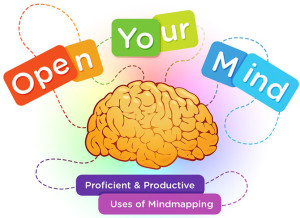Using Layered Curriculum by Cheryl Hecht, M.Ed.
 Layered Curriculum is an easy way to differentiate activities for different abilities and give students input into their learning. Students are offered choices in activities they complete and grades they want to work towards. For students, Layered Curriculum activities are opportunities to problem solve, use their strengths, and learn concepts they haven’t yet mastered without the redundancy of practicing what they already know.
Layered Curriculum is an easy way to differentiate activities for different abilities and give students input into their learning. Students are offered choices in activities they complete and grades they want to work towards. For students, Layered Curriculum activities are opportunities to problem solve, use their strengths, and learn concepts they haven’t yet mastered without the redundancy of practicing what they already know.
- A “layered” document describes activities, appropriate to receive letter grades: A Level, B Level, and C Level. Anything lower than a C is not an option. These activities are practice-to-learn concepts – they do not teach the concept.
- What activities rank an A, B, or C? Get your students involved. Pass out a half sheet of paper with instructions for students to list 3 – 5 activities they are willing to do for an A grade, B grade, C grade.
- Sort and type the returned suggestions into three ability groups. Any teacher, who has been in a classroom for more than 30 seconds, knows there are a variety of learning abilities, for example, advanced, at grade level, and below grade level.
- From each category of suggestions, you will create three layered curriculum activity sheets: one for your “advanced” learners, one for your “at grade level” students, and one for “below grade level” students. For example, a layered curriculum sheet for your advanced group, would be the “advanced” suggestions grouped into three levels of difficulty: A activities, B activities, and C activities.
- Edit out activities not appropriate or blend together activities for each group. The activity itself might not be appropriate or could be ineffective for learning new material. And certainly, some suggestions from the “below grade” level ability groups that would work well for your middle or high groups.
- Include your own ideas and keep a data base of ideas to change choices every so often. Use what you know about learning characteristic: visual spatial learners, kinesthetic learners, talkers, and listeners, shy, introverts, extroverts, etc and include activities that embrace those unique traits.
- Just doing an “A” level activity does not mean the product earns an A. Work has to be quality. Use a rubric to identify what you are looking for in the products produced. To receive an A, students must do an activity from each section; to receive a B, activities from the C and B sections, and to work toward a C, students do one activity from the C section.
- Limit layered activity sheets to one page with three sections and provide five to seven choices per section. The bottom section is the C level work, middle section is the B activities, and A is the top section.
- Pre-testing is helpful in differentiating layered curriculum activities for students who already know certain material. For example, let’s use Layered Curriculum for spelling activities. Give a pre-test of your weekly spelling words. Have students include only those words they missed on the pre-test in the activities they do for the week.
- Teachers, you do not have to grade each activity. Students turn in their packet and you do a quick check of each activity, but only grade one activity; or every once in awhile ask your students which activity they want graded.
Layered Curriculum works really well for students who receive special services. They come back into the regular classroom, with their own spelling lists, and know exactly what is expected of them. They feel empowered and part of the regular classroom. Teachers benefit because they do not have to recreate activities for every lesson or grade all parts of the activities. I was first introduced to Layered Curriculum by Kathie F. Nunley, who was a keynote speaker at ITAG, a gifted conference in Sun Valley several years ago. I immediately implemented the basic format and my students loved it!
Cheryl Hecht, M.Ed., is the creator of Moms are Mathletes!, a membership for moms who want their children to learn math successfully and stress free. Cheryl writes math lessons that are engaging and bring forth self-discovery of math patterns using hands-on activities. Please go to www.momsaremathletes.com to learn more.
 And to help you generate those ideas for your next project you will want to access the teleseminar Proficient & Productive Use of Mindmapping Open Your Mind! which is available for immediate download and listening.
And to help you generate those ideas for your next project you will want to access the teleseminar Proficient & Productive Use of Mindmapping Open Your Mind! which is available for immediate download and listening.


